Traces of Buddhism in center of Gyeong Bok Goong, a symbol of Confucianism.
20170917 slowwalker
The relationship between Buddhism and Confucianism was very peculiar in Korean Society. Buddhism was accepted 2000 thousand years ago. Confucianism was accepted at 12C from china. A Confucianism accepted at that time was not politcal ideology based from the teaching of Confucius. In china when Buddhism was accepted Original Confucianism had lost their influence in chinese philosophy society. Original Confucianism was not a philosophy for the meaning of life but for a political order. The scholars felt thirst on deep thought. Naturally orthodox confucianism was gradually disappeared.
Later chinese scholars tried to merge Buddhism with Confucianism. More clearly speaking, Confucianism accepted the view of Buddhism on the existence of reason and emotion, the structure of human spirit, etc. The name of this study was Seong Lee Hak (性理學) Seong Lee Hak is korean pronounciation, so I don't know how to read in chinese style. Anyway with the Seong Lee Hak, Buddhism was weakened quickly.
Korea had accepted Seong Lee Hak at late Koryeo Dynasty. With a collapse of the Koryeo Dynasty, Buddhism could be lost their influence. But a famous monk was a master of the first king of Choson Dynasty. Buddhism had helped the first king to build the Chosun Dynasty.
In Chosun dynasty, the influence of Buddhism had been weakened gradually. But in the Palace, you can find the trace of Buddhism.
Today I'd like to introduce you that trace in Confucianism Palace.
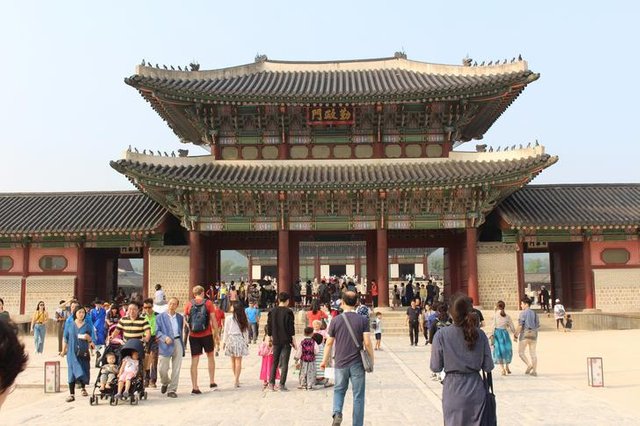
This is a gate to enter the main building of Palace. The name of the gate is Geun Jeong Moon. Here Geun means working, Jeong means politics and Moon means gate. I already posted, Choson thought the order as the most important principle in ruling country. So you can find five gates there. The center for king and king's family, next two for the officials and last 2 for the workers.
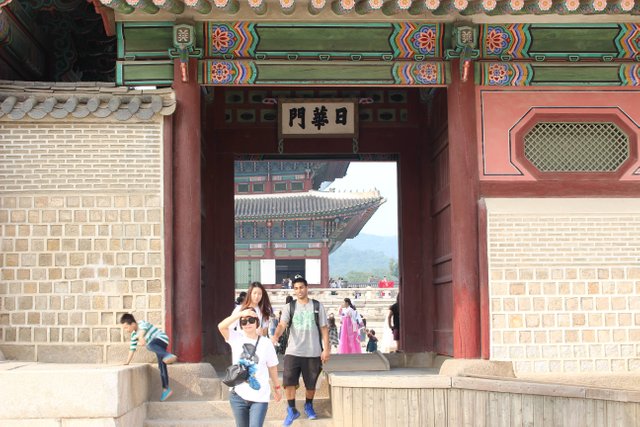
The door for the workers.
Under the roof you could find the trace of Buddhism.
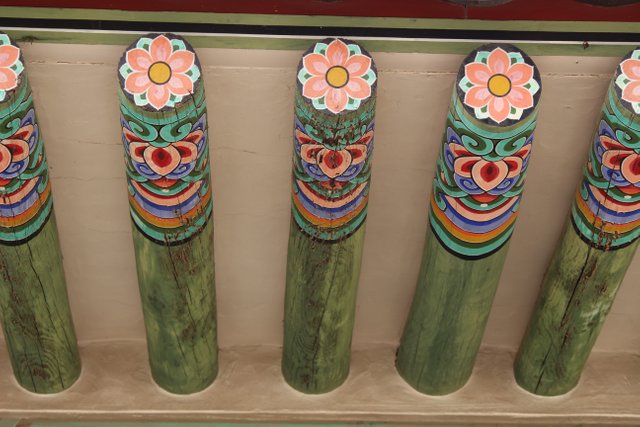
It looked familiar to Buddhist Temple, right. it is lotus and as same as that of Buddhist Temple.
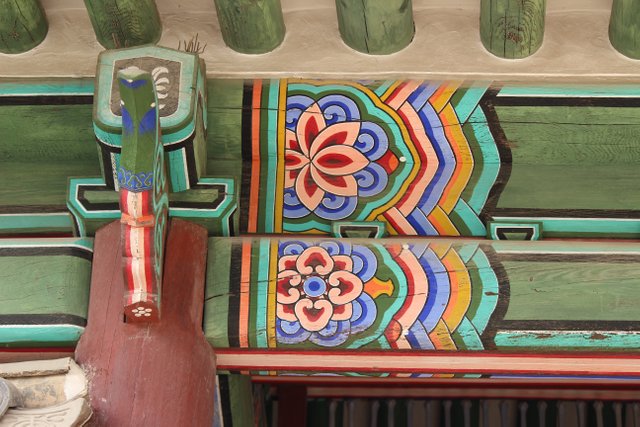
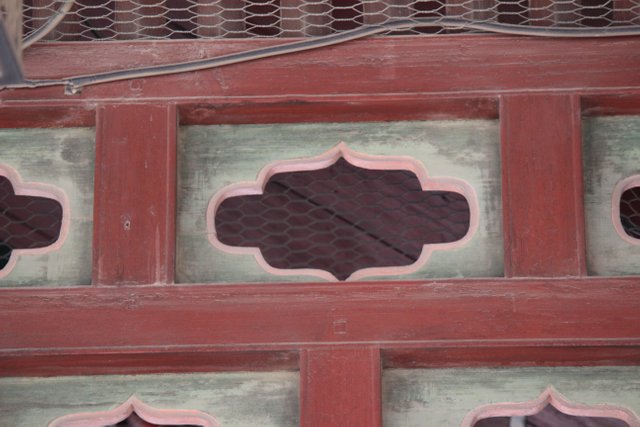
I took the photo of this patterns on the ceiling
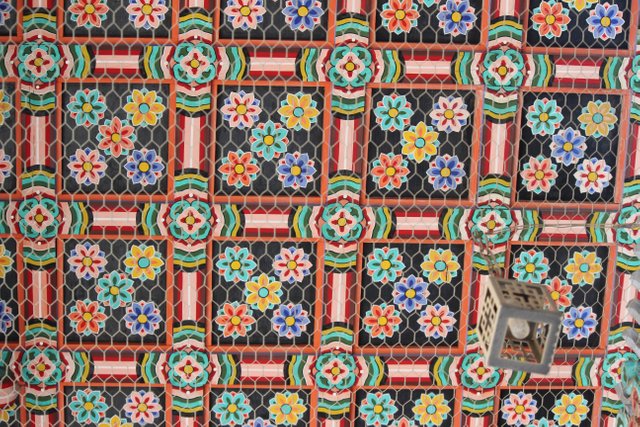
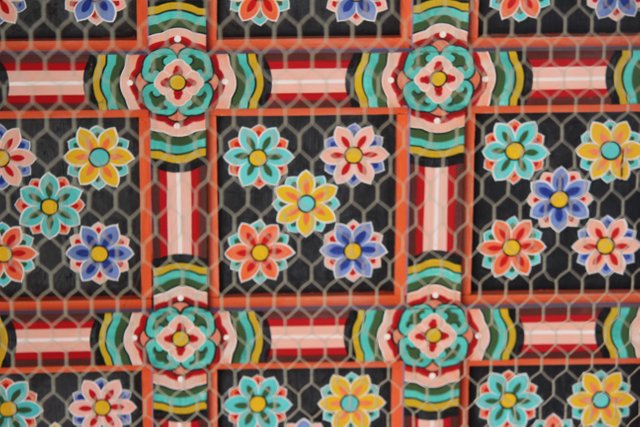
Every patterns seemed to come from the symbols of Buddhism.
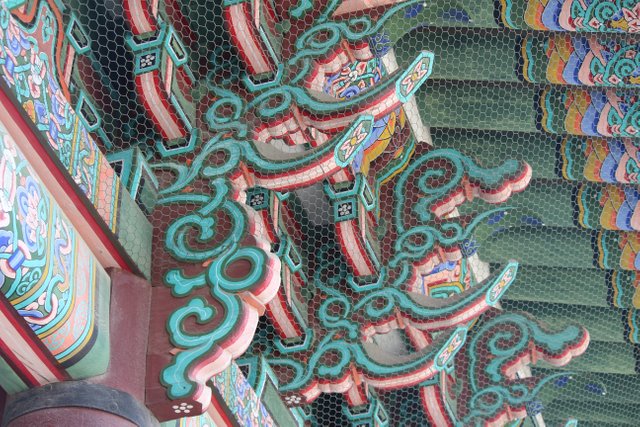
In my guess, this kinds of structure and patterns were inherited from Koyreo Dynasty. In Koryeo Dynasty, the influence of Buddhism was much more stronger. Actually Koryeo Dynasty was Buddhist kingdom.
So naturally the style of building a palace was well made according to Buddhist construction style. Maybe Choson dynasty officials had taken it for granted.
So we could look at the lotus patterns in Choson dynasty Palace.
I took the pics of the rooftop. There I could see the last animal. It looked like a dragon. But I couldn't confirm wether I am right or not.
Thank you for reading
@gavvet, @timsaid @kpine @sweetsssj @thepropeto
thanks for supporting my fellow friend..slowwalker..
anyway , let's focus on the topic,
let me go back on the history..
Goryeo (고려; 高麗; [ko.ɾjʌ]; 918–1392), also spelled as Koryŏ, was a Korean kingdom established in 918 by King Taejo. This kingdom later gave name to the modern exonym "Korea".It united the Later Three Kingdomsin 936 and ruled most of the Korean Peninsula until it was removed by the founder of the Joseon in 1392.
Two of this period's most notable products are celadon pottery and the Tripitaka Koreana—the Buddhist canon (Tripiṭaka) carved onto more than 80,000 woodblocks and stored (and still remaining) at Haeinsa. The oldest surviving metal movable type book, the Jikji, was printed in 1377.
the art and the site speaks itself on the kingdom history, culture and religion.

In the 13th century Koryŏ suffered from a series of invasions by the Mongols. King Kongmin (1352–74) attempted a set of reforms to drive out the invaders and eliminate their influence from the court, but without success. Finally, in 1392, the newly emerged Confucian scholar Gen. Yi Sŏng-gye overthrew the shaky dynasty and founded the Chosŏn (Yi) dynasty (1392–1910).
your article was very informative and very set on details on the religion art style.
thanks for sharing..i give you my thumbs up and up vote. @slowwalker
P.s
@mrblu
Thank you
You explained much better than me
really nice post ,, i love korea since i 15 years old, i usully watch the korean movie that talk about their history and culture. And, because of this article, i got more information about your country, thanks very much friend.
i'll upvote and resteem your article
thank you
you're welcome @slowwalker, thanks for giving me upvoted :)
great information my friend @slowwalker ...
it's told me much about korean culture and his history. thanks for sharing
thank you
you're welcome, lets see my page @slowwalker
great information my friend @slowwalker
thanks
ur welcome my friend
This is a beautiful place and an interesting read. Western Asian cultures have always intrigued me.. The ancient history has remained so beautifully preserved and respected.
Nice article!
Thankx
I like Buddhists and their way of life. They don't cut heads off and threaten everyone.
Nice to meet you here
Yes.. Buddhism is a teaching of peace within our inner self. Forgive others to forgive yourself...
I agree
Post of the day.i resteem your wonderful post.i know this post will be in hot list.best of luck
thank you
Dear friend! I really liked your post, well written. I'm asking you to go to my page and mark "like" or leave a comment in the posts. Did you like it and you subscribe to me? I will reciprocate and You will be very grateful. Thank you! :))
This culture also nice.